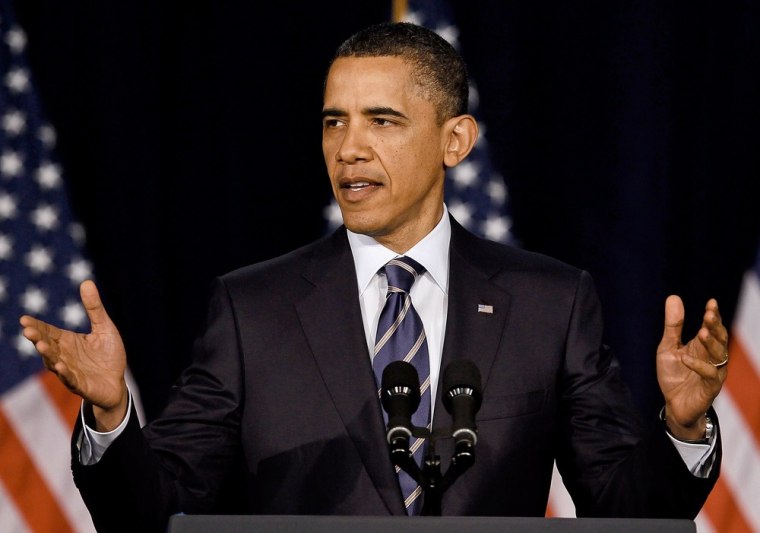In his speech Wednesday afternoon, President Barack Obama broke a little new ground — calling for the creation of a fail-safe device for holding down national debt.
But much of his speech was a reprise of proposals and arguments he has made before, in his fiscal year 2012 budget blueprint and elsewhere.
Here are some of his proposals by category.
Innovative:
Obama said if federal debt as a percentage of gross domestic product (GDP) did not fall by 2014 to the level now projected, then "my plan would require us" — Congress and the president — to make more spending cuts and "more spending reductions in the tax code."
Said Stan Collender, a former Senate Budget Committee staffer, "The trigger is interesting because it's tied to the debt rather than the deficit. That's a change from the Gramm-Rudman-Hollings days" — a reference to the 1985 automatic deficit reduction bill.
In his fiscal year 2012 budget plan, Obama aims for publicly held debt to be 76.3 percent of GDP by 2014 (higher than it is today).
Familiar:
Obama called once again for higher taxes on upper-income Americans. Specifically, he referred to the current income tax rates for upper-income people, which he agreed to extend to the end of 2012.
He pledged that he would "refuse to renew them again."
Dean Zerbe, former tax counsel to the Senate Finance Committee who worked on the 2001 and 2003 tax bills who is now national managing director at alliantgroup, a specialty tax advisory firm, said, as to Obama's "line in the sand on the taxes in the future, it's difficult to see how the world will be much different two years from now and we will face the same conundrum."
As Obama did in his first budget proposal back in 2009, he called for limiting itemized deductions for high-income taxpayers, a proposal that would have raised $318 billion over 10 years when he first proposed it and — now, he said — would raise $320 billion over 10 years.
Not specified:
Obama did not specify a target for the level of federal spending he wants to achieve.
In the years between the end of World War II and 2009, federal outlays averaged 19.7 percent of GDP.
Spending soared to 25 percent of GDP in 2009 and 23.8 percent of GDP in 2010, the highest levels since 1946. His budget plan calls for spending to be at 23 percent of GDP by 2021.
Not yet clear or not mentioned:
Will the methods Obama mentioned for reducing health care outlays — "reduce wasteful subsidies and erroneous payments," for example — go beyond those already enacted in last year's health care law? If so, in what ways?
In what way will the strengthening of the Independent Payment Advisory Board (IPAB) that Obama mentioned in the speech reduce costs?
Obama called for eliminating some tax credits, breaks and deductions. But he did not endorse proposals such as the ones made by his fiscal commission and by the Rivlin-Domenici task force to limit the tax credits and preferences that benefit middle-class Americans — and that cause the biggest loss of revenue to the Treasury.
For example, Obama did not mention the Rivlin-Domenici recommendation of phasing out the tax exclusion for employer-provided health insurance. Not taxing that income loses the Treasury about $250 billion a year in revenue, according to the Rivlin-Domenici task force.
Zerbe said on taxes Obama was "giving pabulum a bad name. The president needs to offer details on tax reform — none provided here — and didn't even embrace the deficit commission’s recommendations.”
